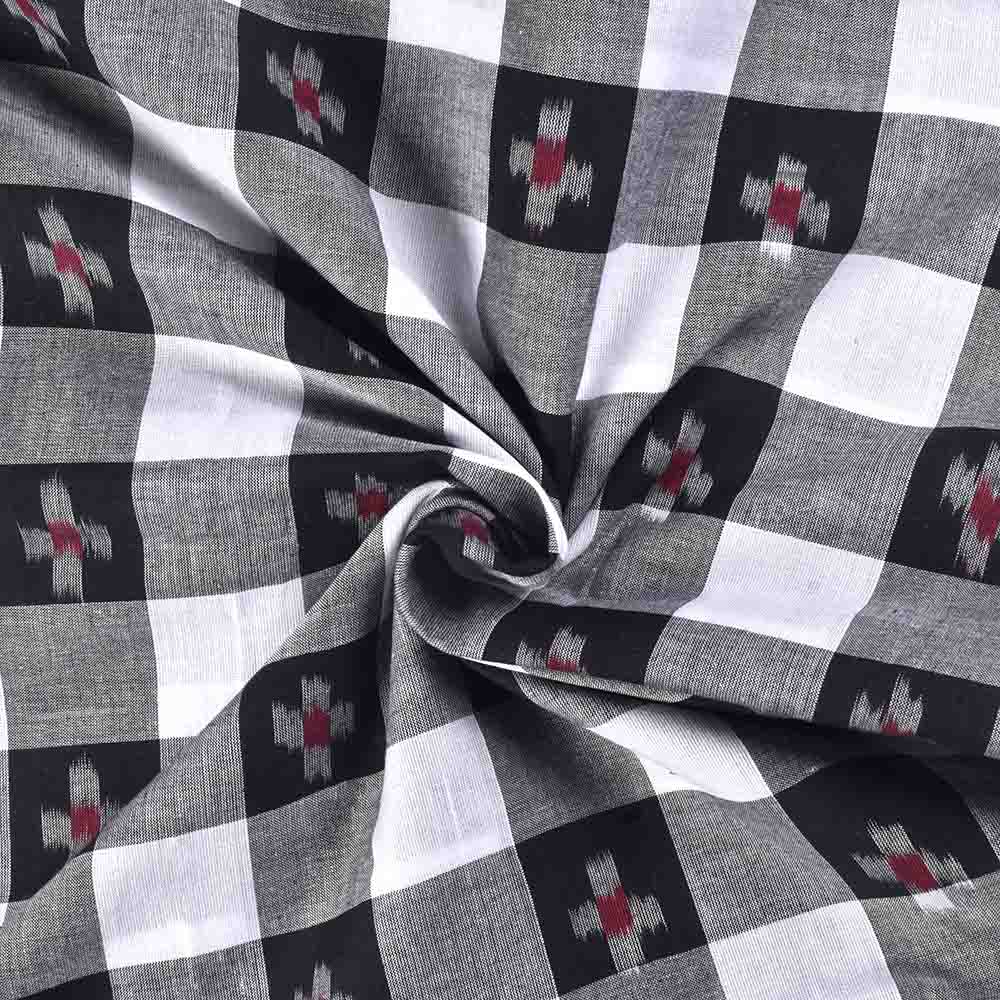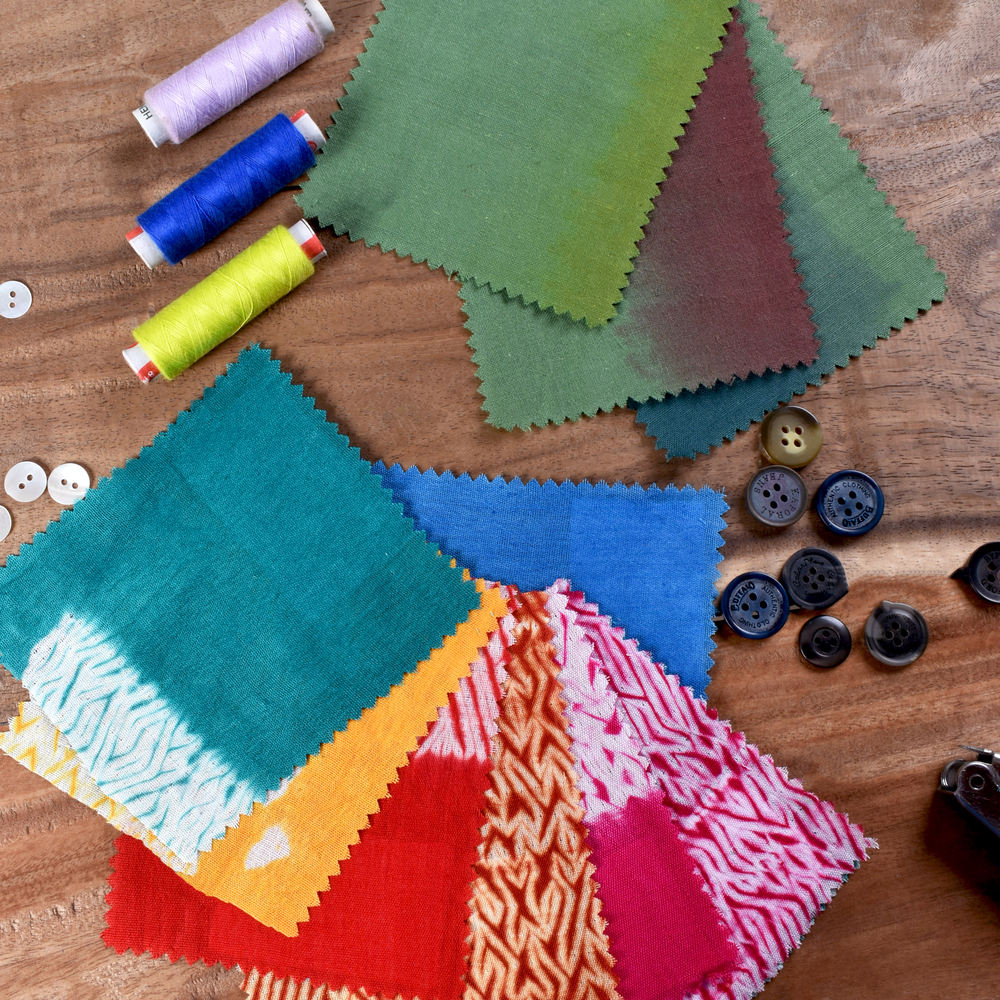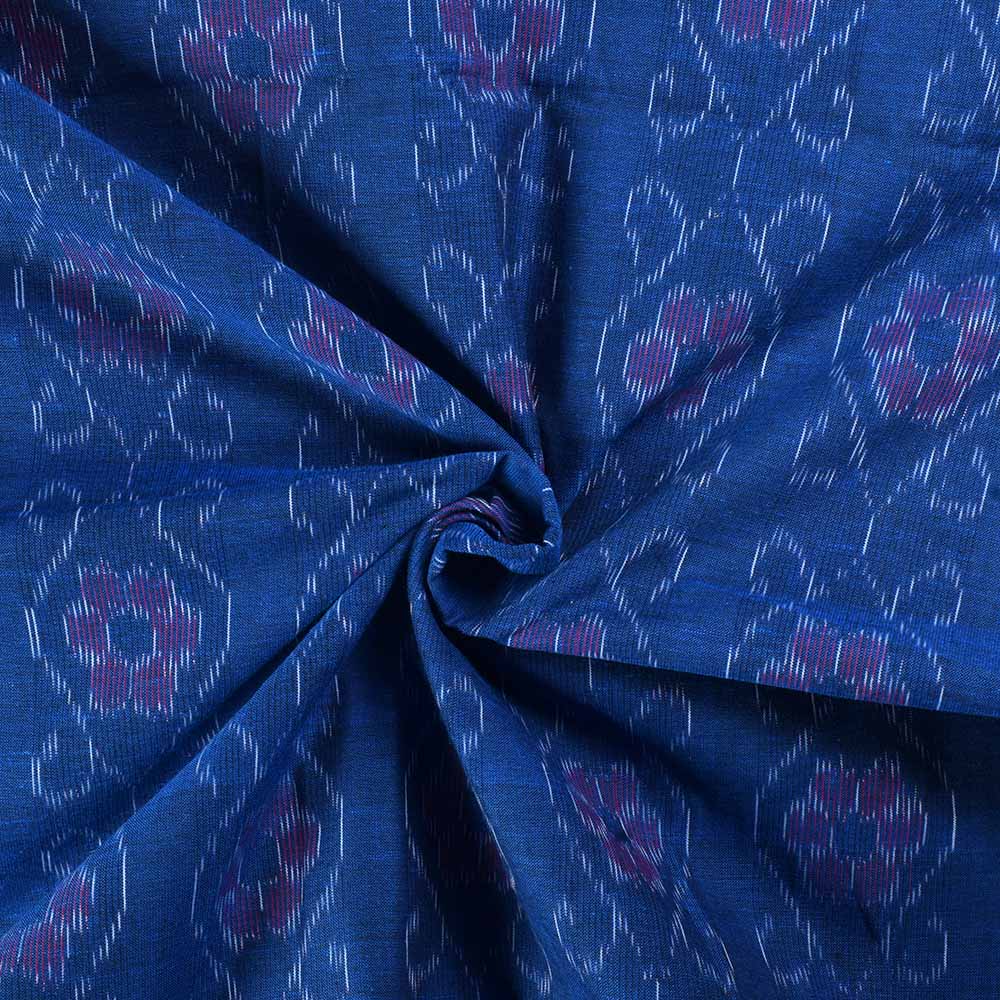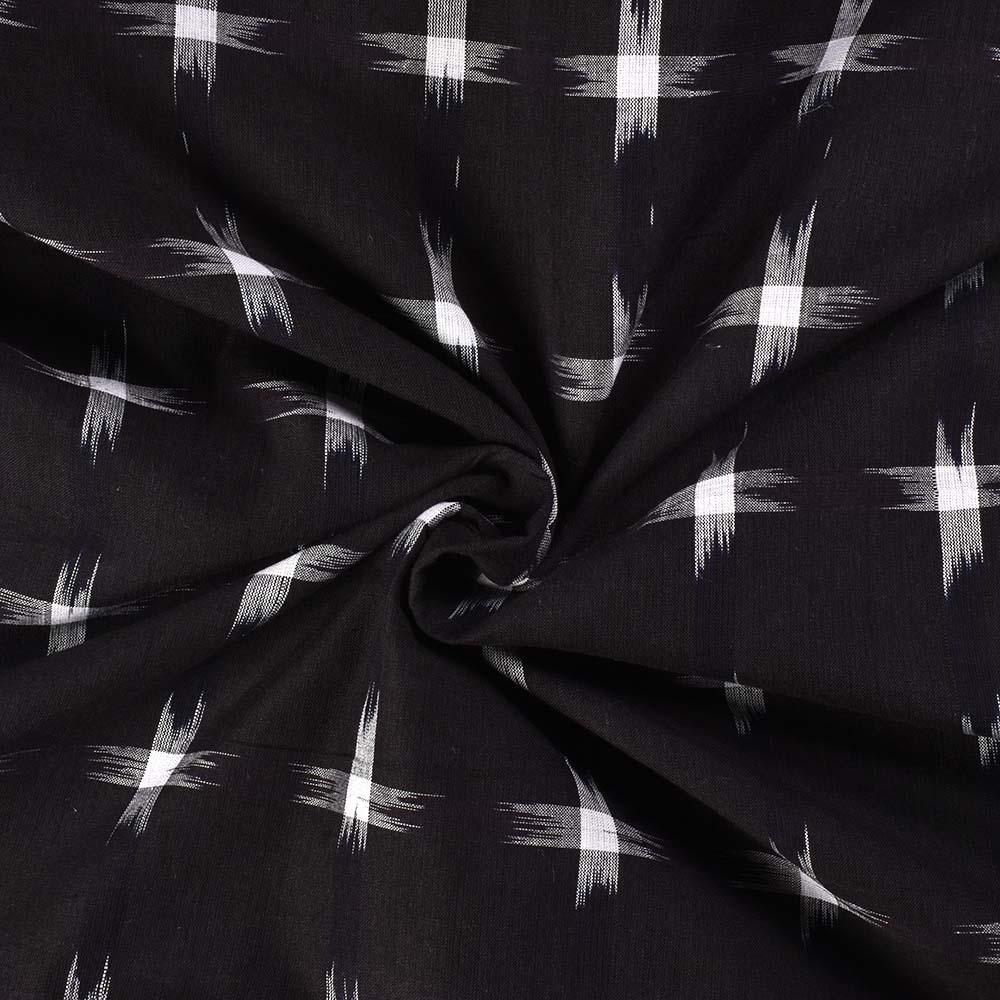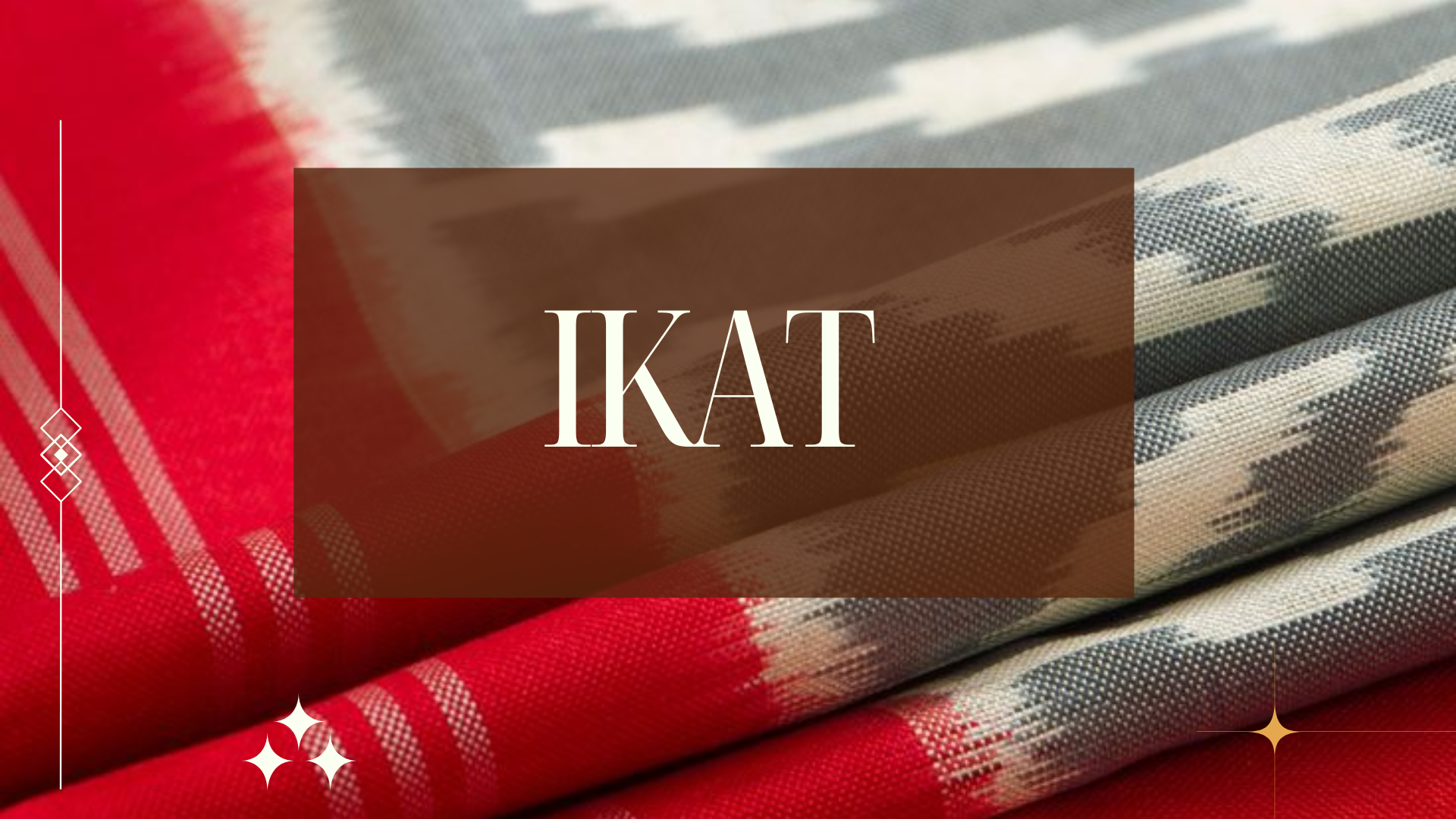
IKAT - A DISTINCTIVE STYLE

Ikkat, also known as Ikat, is a traditional weaving technique where the threads are dyed before being woven into fabric. This method creates unique and intricate patterns on the fabric as the dyeing process is done before the threads are aligned on the loom. The word "Ikkat" is derived from the Malay-Indonesian word "mengikat," which means to tie or bind.
Ikat's Cradle: Unearthing the Textile's Ancient Past
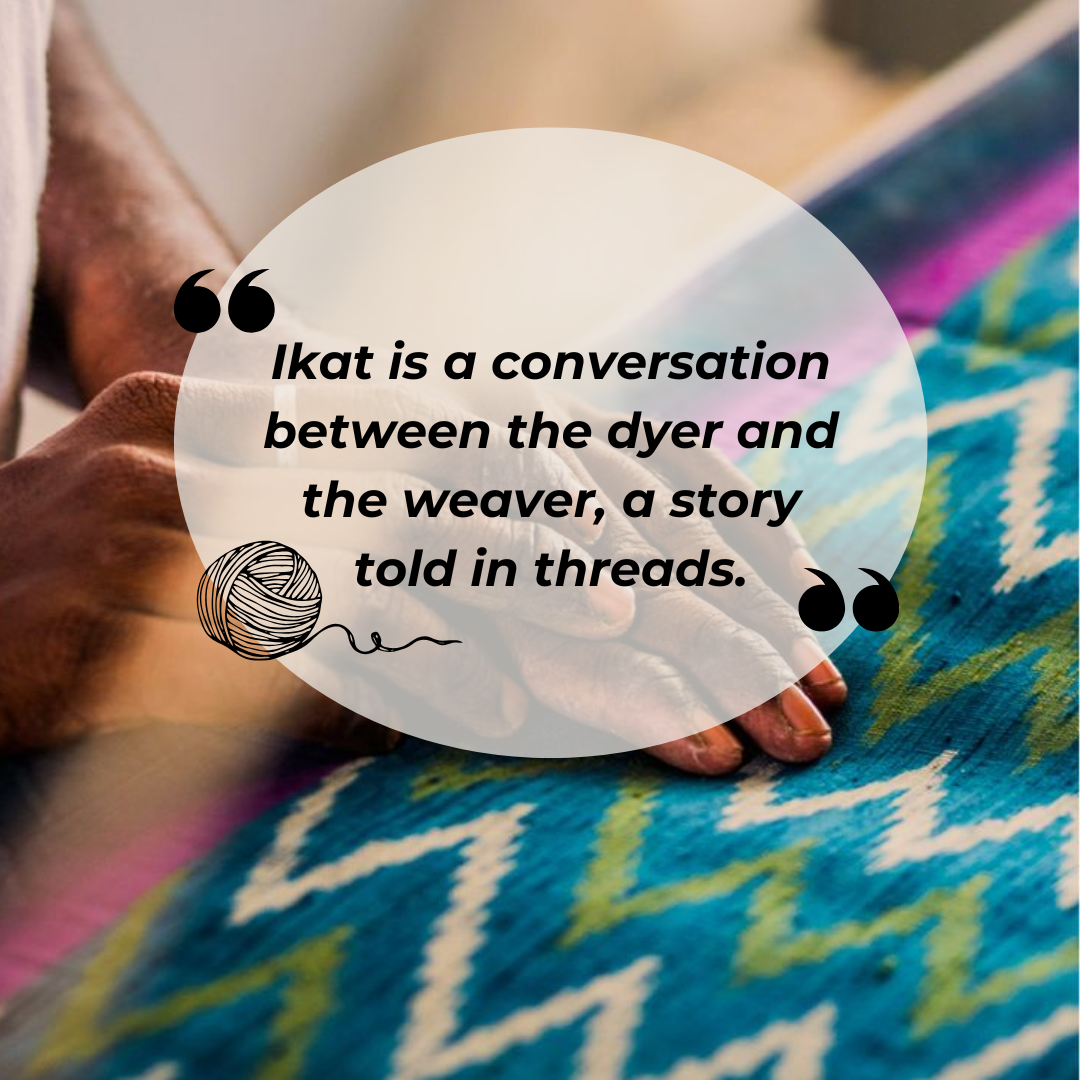
Ikat has Indonesian and Malay origins, bit has been shown in history from pre-Columbian Peru, India, Egypt and Guatemala, 10th century Yemen, Japan, Uzbekistan and a few others.
The longest history of ikat prints is 5000 years with the oldest historical piece of ikat art being in the Indian Odishan style which was found in Pharaoh’s tomb, which historically was decorated eccentrically to honor their kings with only the best and more ceremonial designs.
The Dutch East India Company first introduced ikat to the European markets after they explored Southeast Asia, discovering and learning the traditions and shared into the modern society of the time.
By integrating Ikat into the modern society, it allowed it to grow and flourish into featured fashion and interior decor in the 21st Century.
Decoding The Types Of Ikat
- Warp Ikat: Only the warp yarns are dyed using the ikat technique. The weft yarns are usually a solid color. This is the most common type of ikat.
- Weft Ikat: Only the weft yarns are dyed using the ikat technique. The warp yarns are usually a solid color. This is more challenging to execute than warp ikat.
- Double Ikat: Both the warp and weft yarns are resist-dyed before weaving. This is the most complex and labor-intensive form of ikat, requiring exceptional precision to align the patterns of both sets of yarns. Patola from Gujarat, India, is a famous example of double ikat.
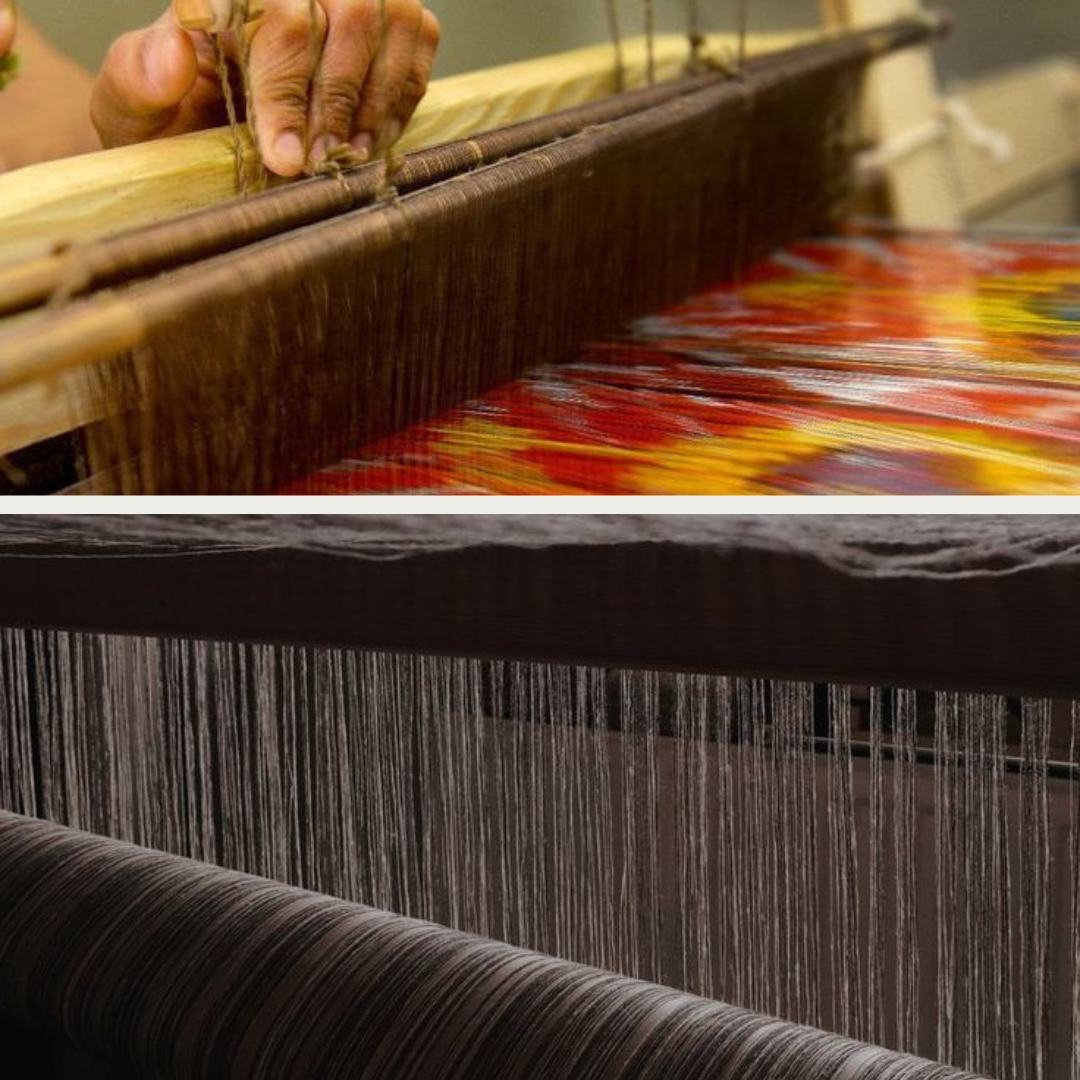
The Magic of Ikat: A Step-by-Step Guide
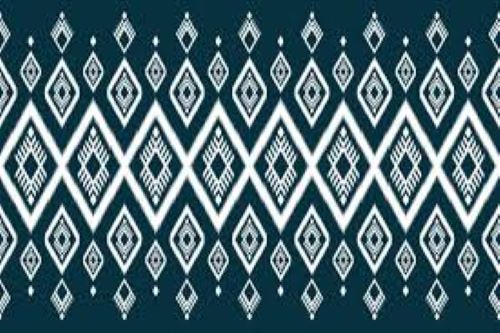
- Designing and Tarn Selection:
The process begins with the design of the desired pattern. This design is then translated onto graph paper to create a template for tying the threads.
High-quality yarn is selected for the weaving process. Commonly used materials include cotton, silk, or a combination of both.
Process involving Yarn preparation
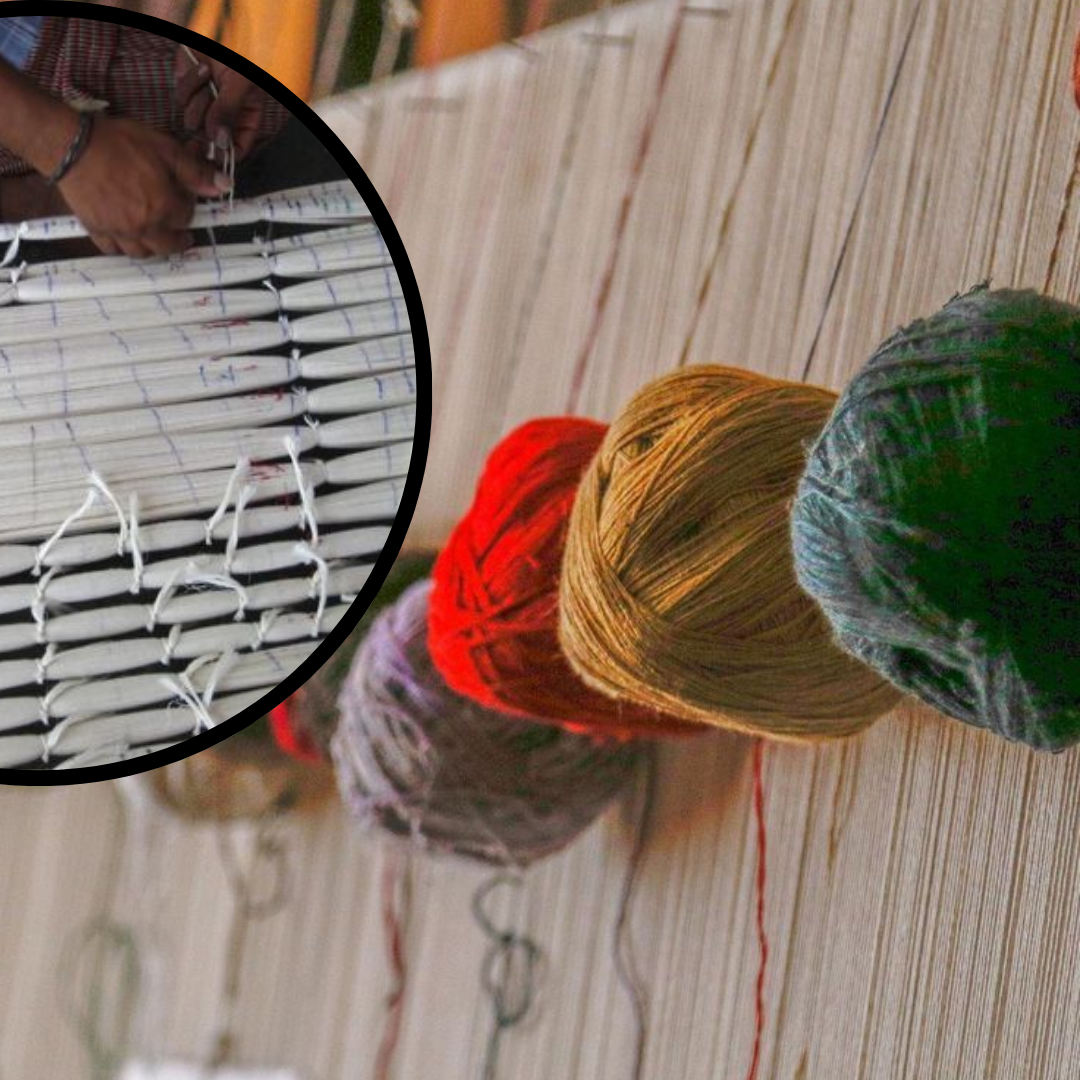
- Yarn Preparation:
The warp or weft yarns (or both for double ikat) are stretched on a frame or warping board. This ensures they are held taut and in the correct order for tying. Bundles of warp (vertical) or weft (horizontal) yarns, or both, are tightly bound with resist material (traditionally cotton threads, but sometimes wax or other materials are used).
- Tying the Resist:
This is the most crucial and time-consuming step. The yarns are tightly bound with resist material, traditionally cotton threads or raffia palm fibers. The precision of these ties determines the clarity and sharpness of the pattern. For complex, multi-colored designs, this tying process is repeated multiple times before each dyeing stage.
Process involving Dyeing
- Dyeing:
The yarn bundles are then dyed. For multi-colored ikats, the tying and dyeing process is repeated multiple times, with new sections of the yarn being bound before each subsequent dyeing. This is a very precise and labor-intensive process.
- Removing the Ties:
Once the dyeing is complete and the yarns are dry, the resist bindings are carefully removed, revealing the dyed pattern on the yarns.
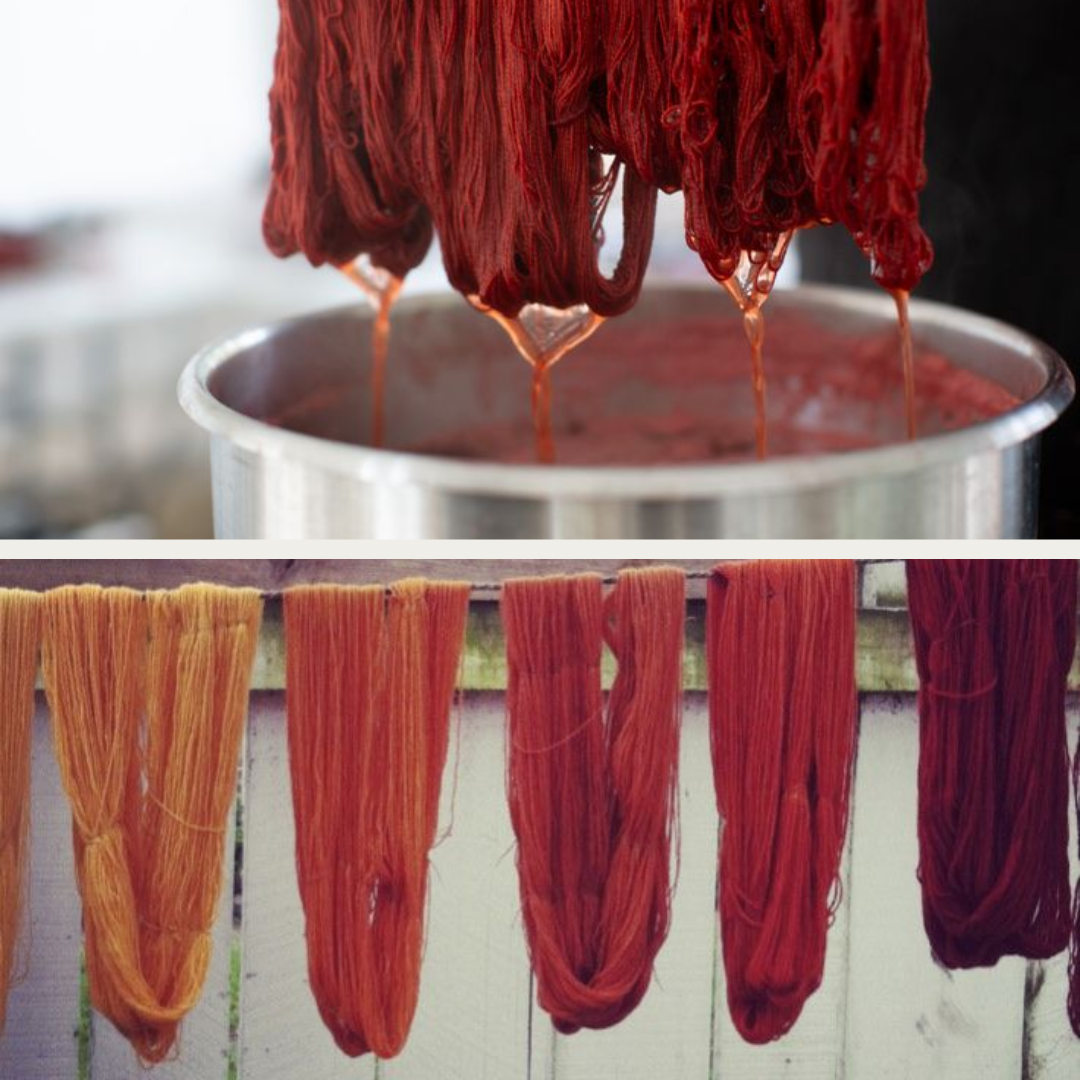
Process involving Weaving
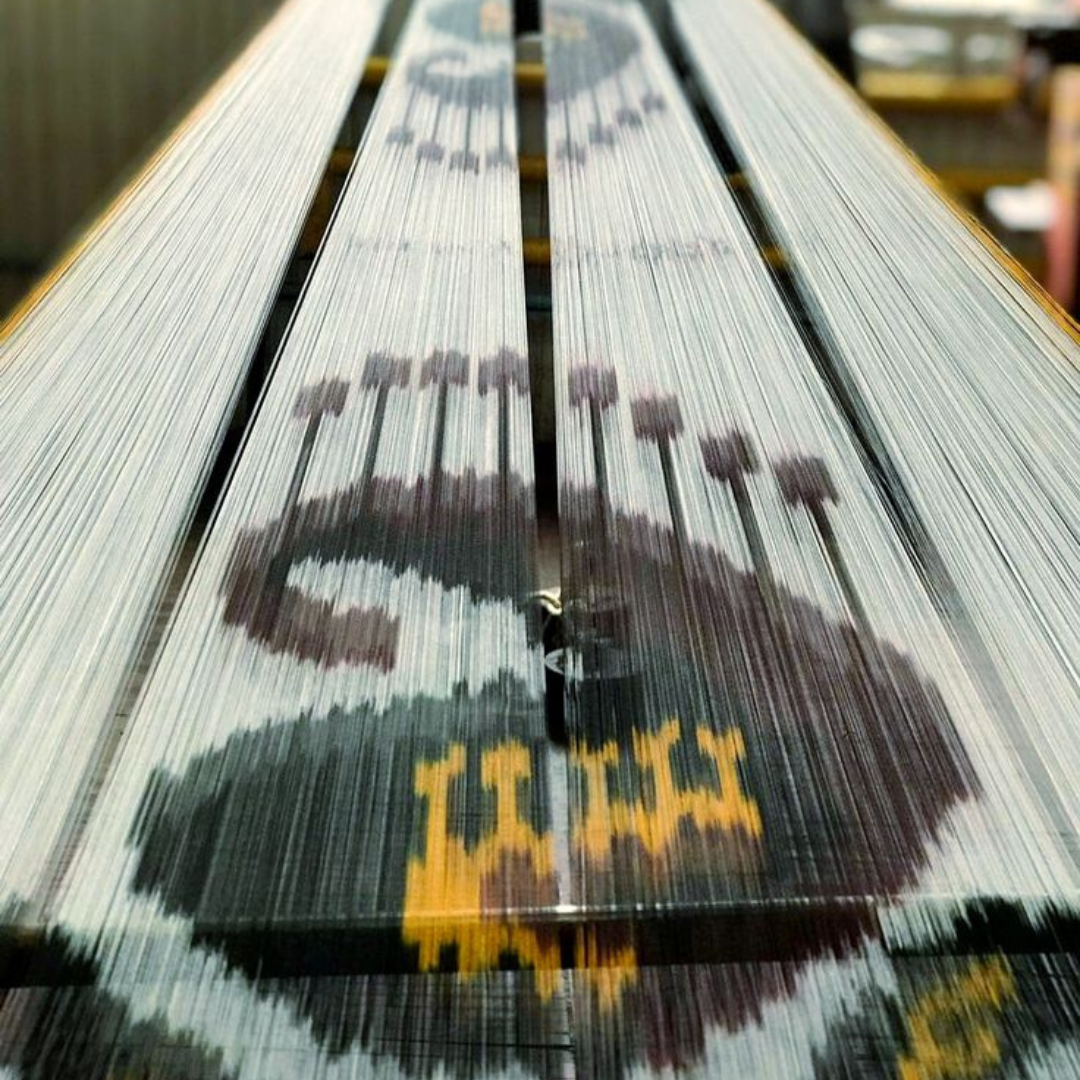
- Weaving:
Once the dyeing is complete, the bindings are removed, and the yarns are ready for weaving. The dyed patterns on the yarns create the design in the finished fabric. Because the pattern is on the yarns themselves, the design appears on both sides of the cloth
Key Characteristics of Ikat
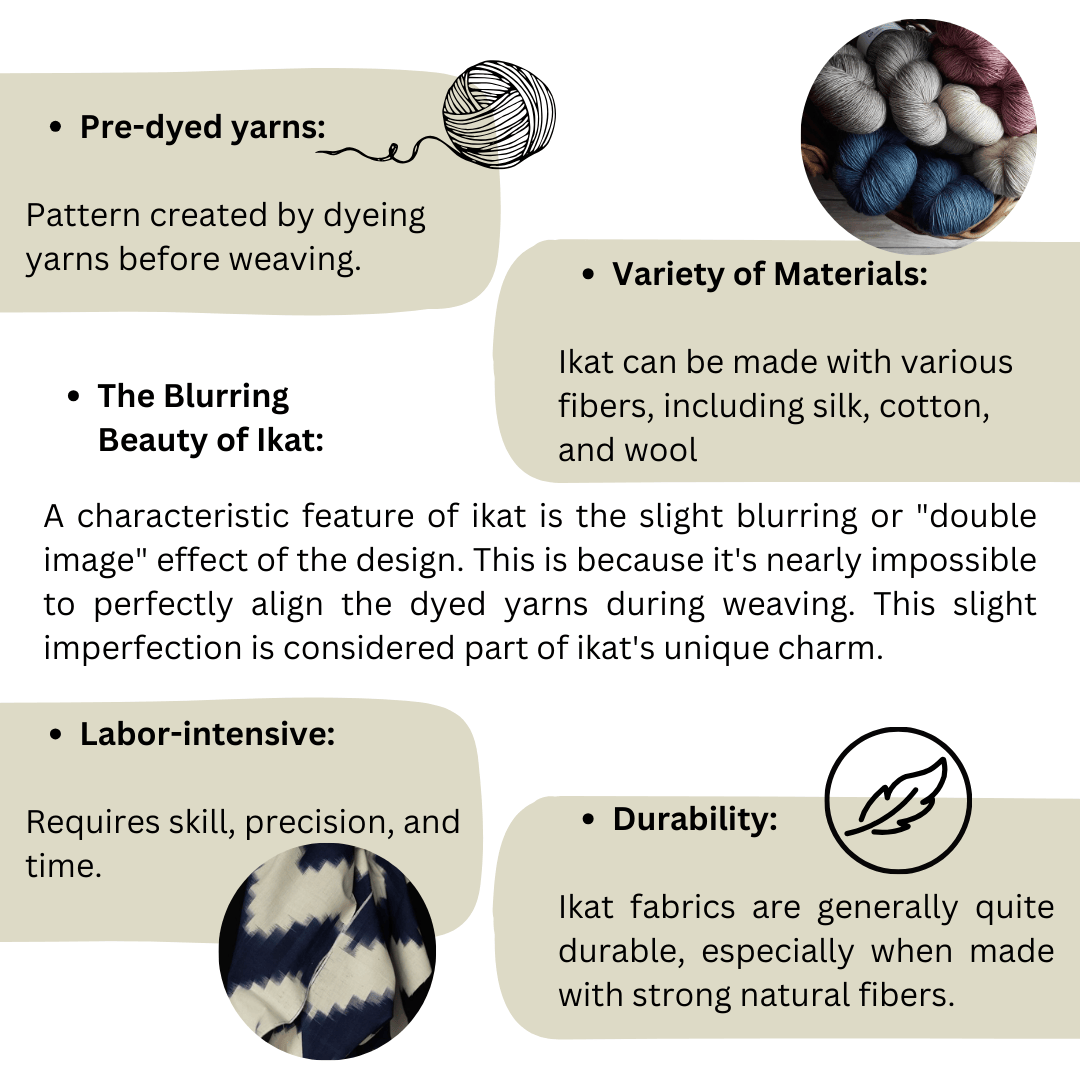
related questions
What is the difference between batik and ikat?
arrow_drop_downThe main difference between batik and ikat lies in their production techniques. Batik involves applying wax to fabric to resist dye in specific areas, creating patterns. In contrast, ikat employs resist dyeing on yarns before weaving, resulting in a blurred design. Both techniques yield distinctive textiles with rich cultural significance in various regions worldwide.
What country is ikat from?
arrow_drop_downIkat textiles originated independently in various countries and regions, including India, Indonesia, Central Asia (such as Uzbekistan and Tajikistan), Japan, and parts of Africa and South America. Each region has its own unique style and cultural significance associated with ikat weaving.
How do you identify an ikat fabric?
arrow_drop_downYou can identify ikat fabric by its characteristic blurred or fuzzy patterns, which result from the resist dyeing technique applied to yarns before weaving. The patterns often appear slightly irregular or out-of-focus, distinguishing ikat from other types of printed or woven fabrics.
What colors are used in ikat?
arrow_drop_downIkat fabrics can feature a wide range of colors, depending on cultural traditions, regional preferences, and contemporary trends. Common colors used in ikat textiles include vibrant hues such as red, blue, green, yellow, and purple, often arranged in intricate patterns and combinations to create visually striking designs.
More Stories
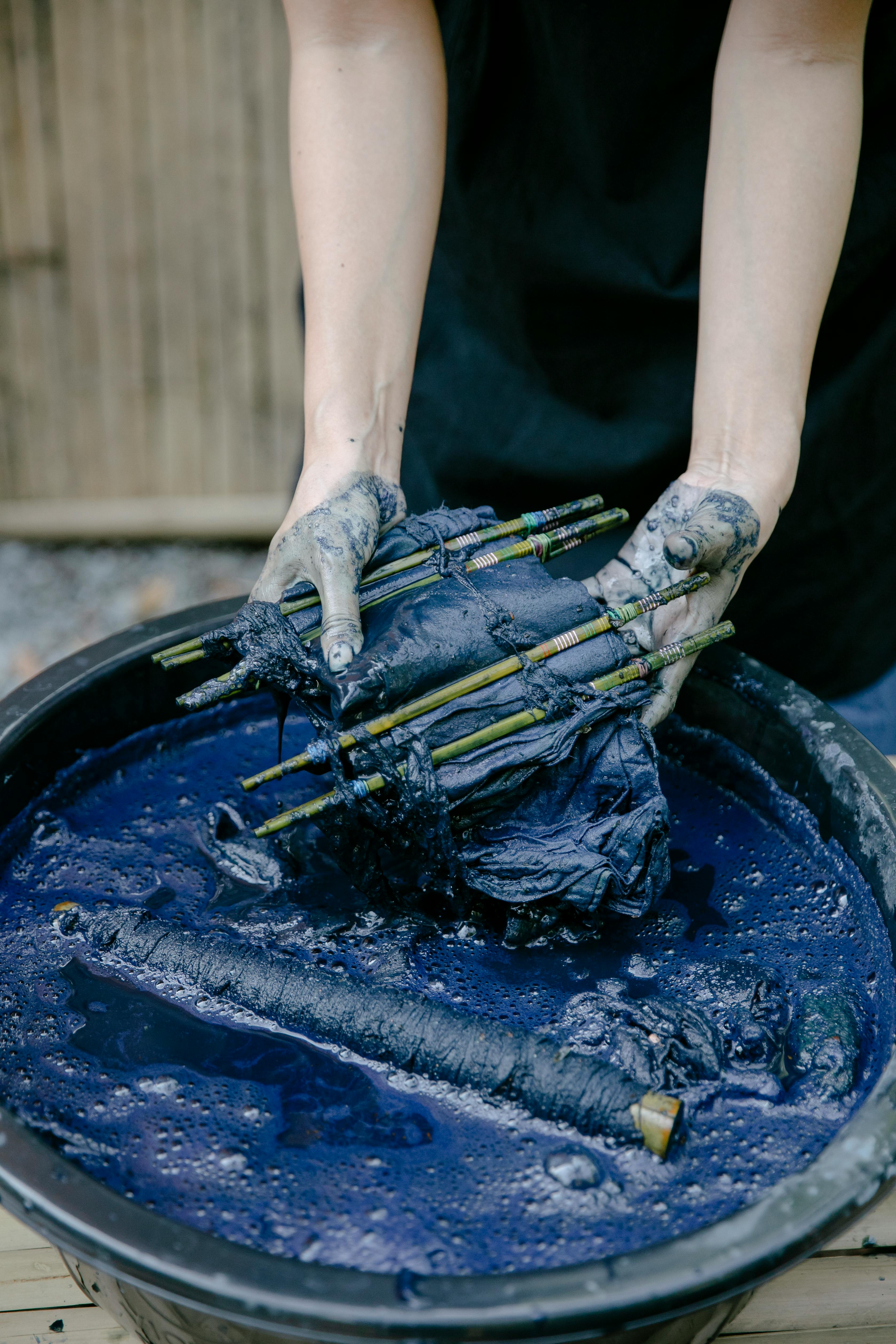
tie-dye technique
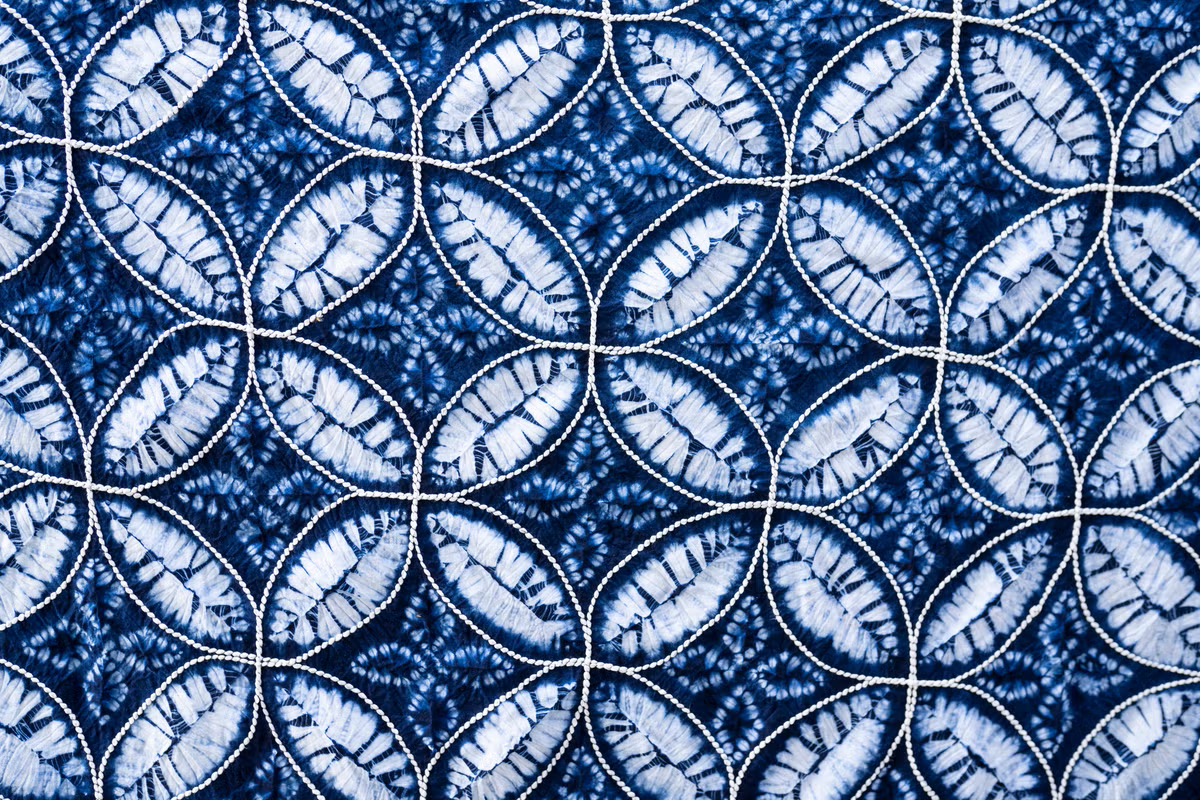
shibori dyeing
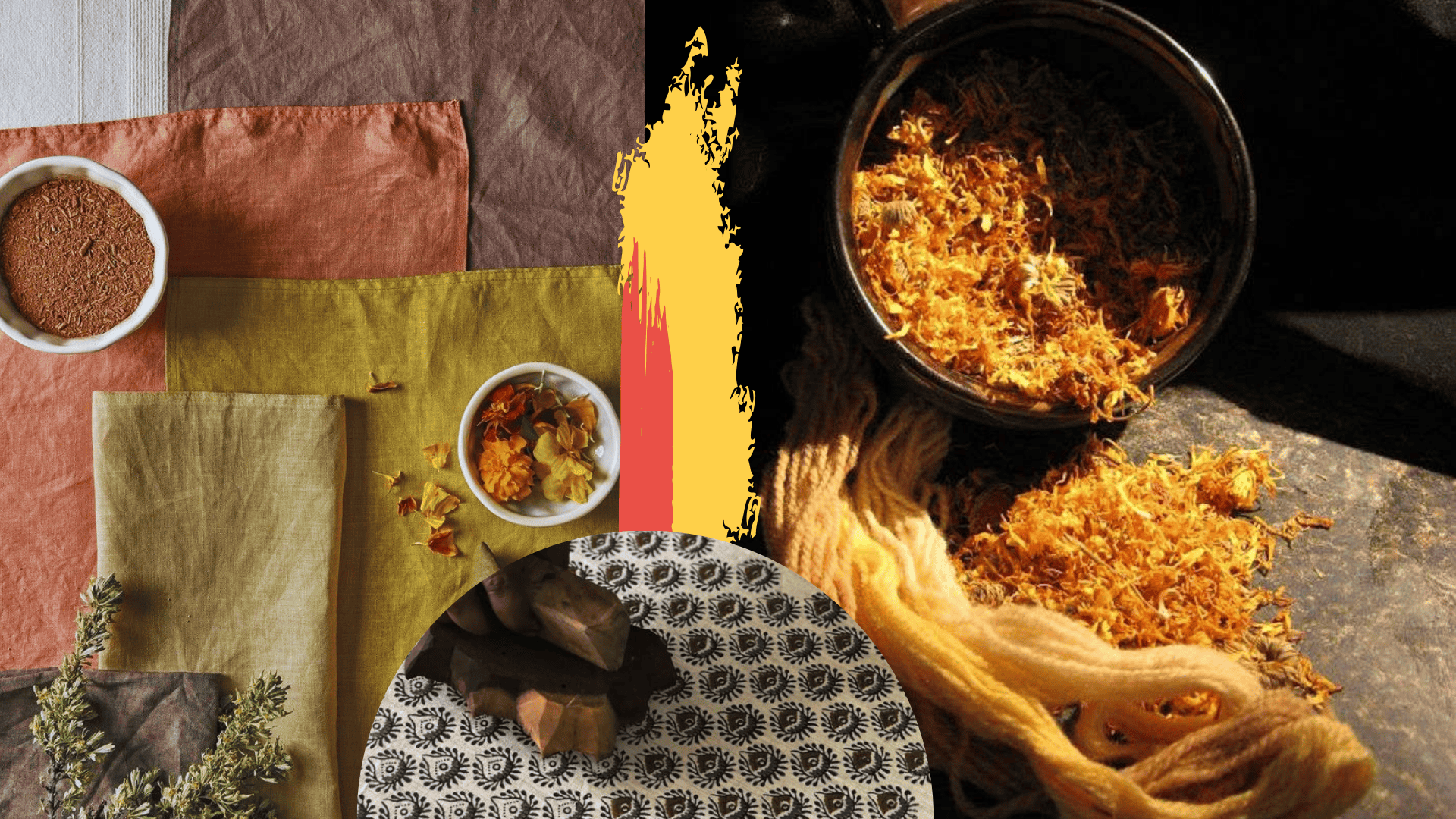
naturally dyed block printing

digital printing
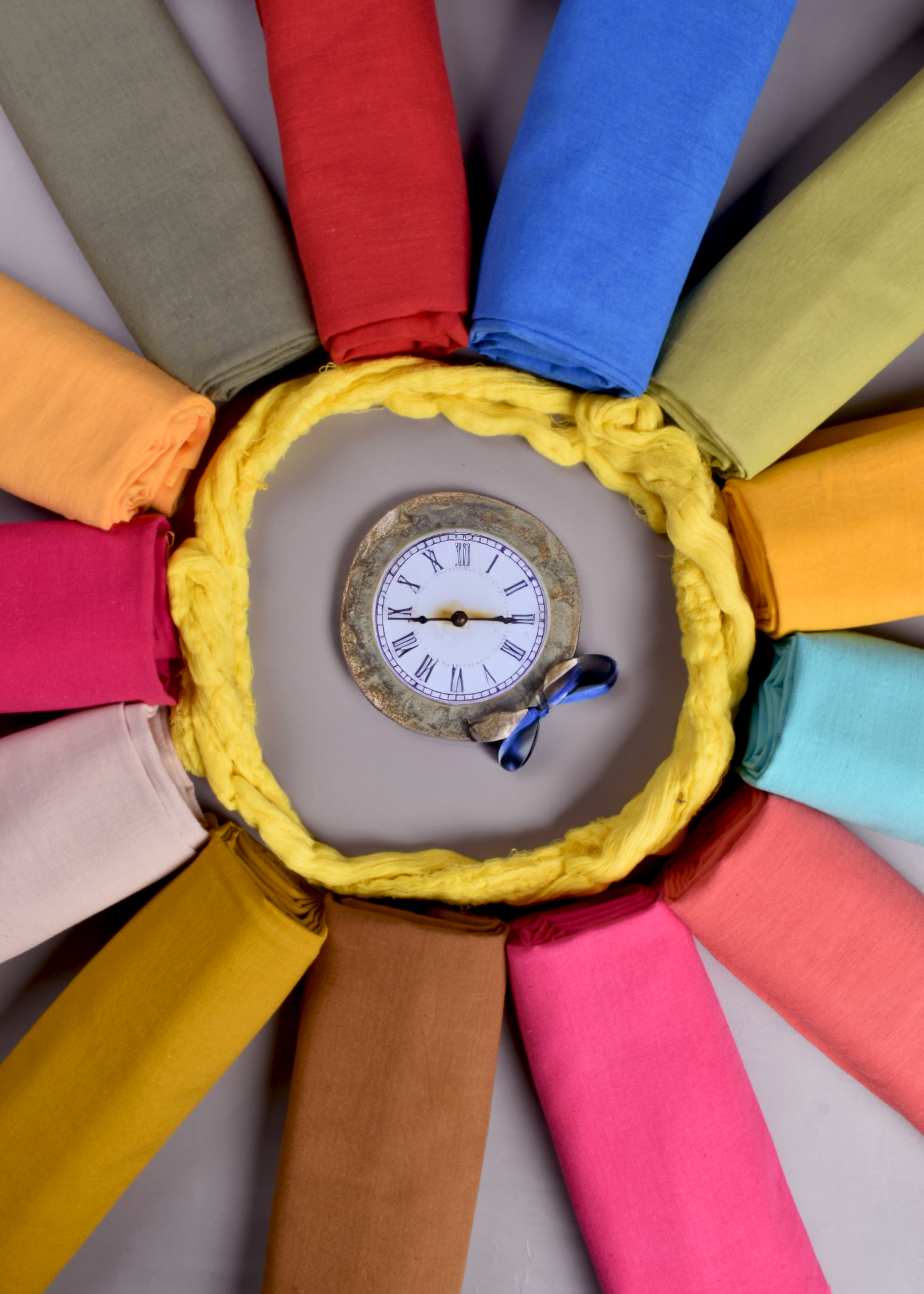
piece dyed fabrics

tussar silk

